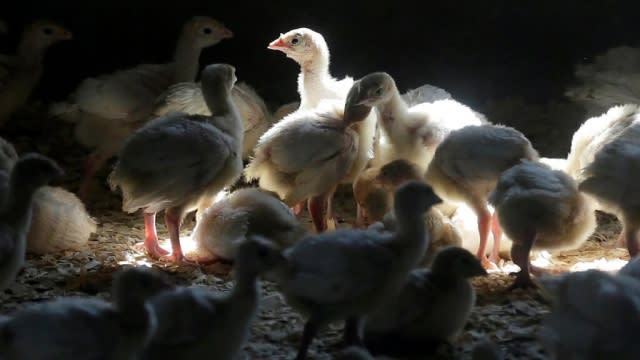Here's what officials know about the ongoing US bird flu outbreak

Outbreaks of avian influenza on poultry and dairy farms have made headlines in the last two weeks. Most recently, infections were discovered in chicken flocks in Texas and Michigan, and one person was diagnosed with avian influenza in Texas after coming into contact with suspected infected cows.
This is what U.S. agencies know about the outbreak.
Highly pathogenic avian influenza A
Avian influenza A, also known as bird flu or H5N1, is a viral influenza that primarily affects wild and domestic birds. A strain is considered either high pathogenicity, which can spread through entire flocks within days and generally shows obvious symptoms; or low pathogenicity, which generally brings few or no signs of illness and is frequently naturally found in wild birds.
In symptomatic highly pathogenic cases, birds may produce misshapen eggs, show swelling or discoloration on combs and wattles, may cough or sneeze or have trouble breathing, and may stumble or fall.
The virus spreads through direct contact between birds, and via contamination of surfaces or materials.
The U.S. Department of Agriculture tracks bird flu cases in the U.S. In the last 30 days, the agency has logged 17 infections in wild birds. So far in 2024, more than 2.3 million birds across 56 commercial and backyard poultry flocks have been affected.
The USDA has also found avian influenza in dairy herds in Texas, Kansas, Michigan, New Mexico and Idaho, and infections in at least 18 different wild mammal species.
SEE MORE: Person in Texas diagnosed with bird flu after contact with cows
Avian influenza in humans
The Centers for Disease Control and Prevention reports there have been two cases of bird flu in humans in the U.S.: One in 2022 in Colorado and one this year in Texas, where a person was in contact with cattle suspected to be infected with the disease.
In the most recent case, the only major symptom was redness in the eyes similar to conjunctivitis. In humans, infection may also cause upper respiratory symptoms or, in more severe cases, pneumonia.
The CDC says close or prolonged exposure to infected animals may cause greater risk of infection.
There is no evidence at this time of human-to-human transmission of the disease.
The agency has been monitoring for human illness since the most recent avian flu outbreak began. It is tracking workers who are in close contact with infected animals and will test any that show symptoms.
Overall, the CDC says the risk from avian influenza to the general public is still low. It says there is no risk of infection from eggs or milk currently in the market.
Vaccine availability
In an interview Wednesday with NPR, CDC Director Mandy Cohen said the agency has vaccine candidates available and has the ability to scale up production if required.
In 2023, GSK and Moderna said they were developing vaccines for bird flu. GSK said it would be prepared to issue 200 million vaccine doses to the U.S. and other world governments in the event of a pandemic.
